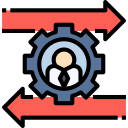Mindset and Wellbeing in Transition
Treat discomfort as data, not a verdict. It signals growth edges. Write one skill you lack, one action you’ll take this week, and one resource you’ll use. Progress measured in inches still moves you forward meaningfully and keeps momentum alive.
Mindset and Wellbeing in Transition
Each day, note one tiny completed step and one insight learned. Reread weekly to see momentum you might otherwise forget. This practice builds resilience, especially when job boards feel silent and your learning curve temporarily feels steeper than expected.







